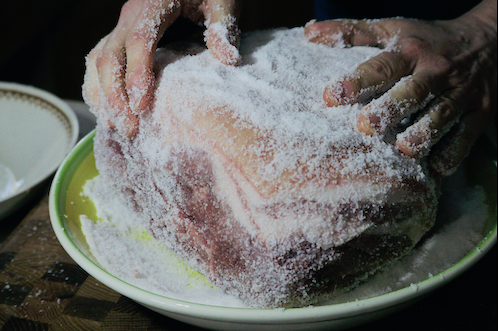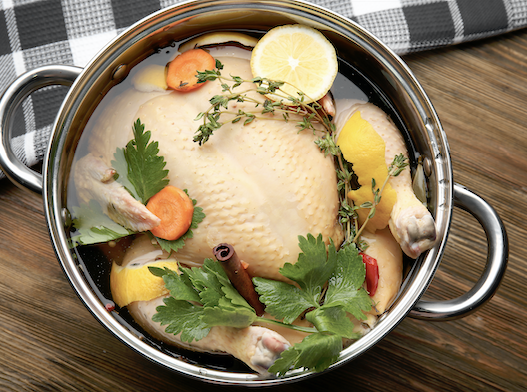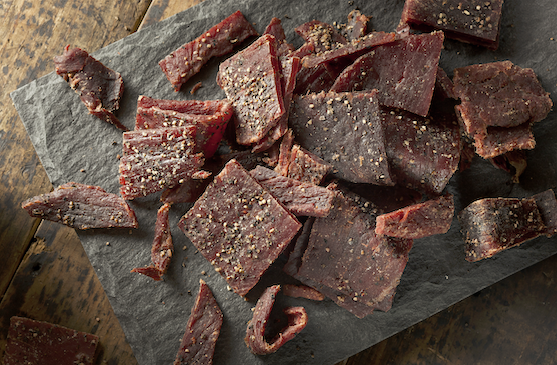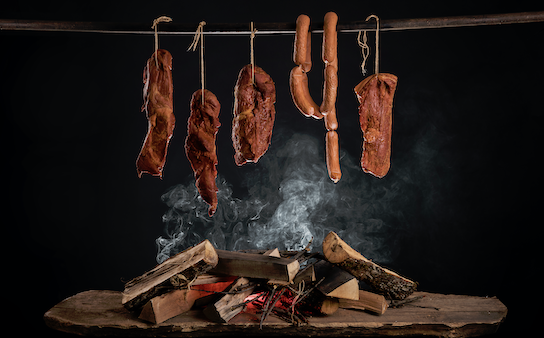Food Preservation: Importance And Basics was originally seen on http://totalsurvival.net/
If you haven’t given serious thought to food preservation, you need to start right now, especially if you plan on hunting, fishing or growing your own food! Over 66 million years ago man first appeared in the fossil record. To try and imagine all of the differences between the lives of early humans and that of us today could literally take an additional 66 million years. However, there are many things that have not and will not ever change. Most importantly the need for nourishment.
On average you can go 11 days without sleep, but only around seven without water. Surprisingly the human body can survive 21 days without food. Thinking about how often we belly up to the table, that seems like a long time, but during those days you will be far from thriving. The human body will begin to adjust after eight hours to make up for the lack of fresh intake.
Lack of Food Intake Side Effects
• faintness
• dizziness
• blood pressure drop
• slowing heart rate
• hypotension
• weakness
• dehydration
• thyroid malfunction
• abdominal pain
• low potassium
• heart attack
• organ failure
Because of these harsh side effects, the natural reaction after a period of starvation is to eat as soon as possible. This is a HUGE mistake! Eating full portions quickly after a period of starvation can lead to Refeeding Syndrome that can lead to swelling of the body tissue, heart conditions, and neurological conditions. Because of this, it is imperative that you take it extremely slow and pace yourself so your body can keep up.
Without the care and supervision of a doctor, this period can be more dangerous than the time of actual starvation. With that being said, that’s why food planning for as many different situations as possible is so important.
BUT… Even the best prepper cannot possibly prep forever.
At some point, even the most well planned and stored food prep is going to run out. Then what?
If you haven’t given serious thought to growing and/or hunting for food, you need to start right now! Even if you already have farming and hunting in your plan, you may still be missing a very important aspect, preservation. To slow growth on foods that naturally contain bacteria you will need to store it properly. Other foods do not and at the first sign of bacteria must be thrown out. In both cases, storage is key. In this modern age of electricity and refrigeration, this is not an issue. This hasn’t always been the case though and if humans are around long enough there will come a time when food preservation is one of the most important parts of life.
Commonly Accepted means of Storing Food
• Freezing
• Canning
• Ready-To-Eat
All four of these are great choices and can be tailored to fit any preppers situation, but even the best preserved, longest lasting food will get old and in the case of frozen food, it will be inedible shortly after power fails. Hunting and growing our own food will be something we are all forced to do in a longterm situation. Quick preservation of our food will need to be something we know how to do for those situations.
The best meats suited for off-the-grid preservation are Beef and Pork but that does not mean they are the only ones. Regardless, which one you have at your disposal, all will need to be first prepared using these three steps:
Meat Preparation
Cool It
I know, if we could keep it cool we wouldn't need to preserve it, but I’m not talking about freezing it. Far from it. All I’m saying is that it needs to be cooled down from the temperature that it is at from the time of harvest. During the second step, this can somewhat be accomplished.
Clean It
After you have skinned and gutted your meat you must clean it, excess blood, dirt, and God forbid bodily fluids will need to be cleaned off quickly prior to preservation to avoid ruining the meat. A quick wash in from a cool water source will do the trick. The water does not need to consumable.
Dry It
There are a lot of options on how to dry your meat so be sure to choose the one that works best for you. The meat has to be dried out thoroughly. Drying the meat greatly reduces the speed at which bacteria grows and this ultimately determines how long you will be able to keep your meat. As soon as the animal expires, the growth begins, so you will need to have a plan before the harvest. Without a pre-determined planned you can cut the meat into thin slices and it allows it to sundry. Before we breakdown some of the other methods, regardless of your preferred method all of the fat needs to be removed from the meat.
Meat Preservation
Preserving meat can be accomplished using salt, wet and drying methods and is one of the oldest forms of preservation. All types of preservation require skill and care and can be especially difficultly because in the field you will be doing a lot of guesswork when it comes to temperature and amounts. For example, not using enough salt can lead to quicker growth and spread bacteria, and unfortunately, this won't be abundantly clear until after you or someone in your group has consumed the meat. Too much salt will make the meat nearly inedible, but it won’t make you sick. It might just make it hard to stomach.
Salting-

In the simplest terms, to salt meat, you are going to want to thoroughly coat your clean and towel dried meat with salt and find a cool area preferably under 50 degrees Fahrenheit to store it for a minimum of one month. Finding an area cool enough can be tough which is why this method generally works better in the winter months. If you would like to go the extra mile and have the resources to do so I would recommend using both salt and a coarser kosher salt. It also helps the flavor of the meat if you add some herbs to your mix. In my opinion though, aside from the temperature requirements, the biggest drawback to this method is the need to carry extra supplies to correctly and safely use this method. Imagine the amount of salt required to cure an elk.
Brining-

Another method that on the surface is relatively simple. You are going to essentially be creating a saline solution that the meat can be stored in. The key though is that the meat must be completely covered with brine and must be stored in a chilly 36 degrees Fahrenheit. The meat must be removed and repacked once a week for a four week period for best results. Also, if at any point the brine begins to thicken each piece of meat and the container will need to be cleaned and a fresh brine will need to be prepared and used.
Drying-

As I mentioned above sun, drying is the simplest method and by cutting the meat in to strips and hanging the meat outside the sun will dry it, hence the name, sun drying. This is a simple self-explanatory method, but I dislike that the precious meat that will sustain myself and my group is being left in the hands of mother nature. We all know how unpredictable she can be. Therefore, my number one meat preservation plan always goes back to smoking.
Smoking-

You will not need any extra materials for this method, other than something you should have on you at all times, your knife and a means of creating fire; this is my favorite method hands down for that reason. I also like that the same method can be used in either a short term camp situation as well as a long term home base setup. In a short term camp environment, such as if you had to travel from the group to hunt your prey, you can use a crudely made drying rack. Back at home base, you can construct a very simple smokehouse to accomplish the same result, but with a lot of reusabilities. With either method, you will want your source between 100 and 200 degrees Fahrenheit.
You will also need to have already cooled, cleaned and towel dried your meat. Using a drying rack simply suspend your meat over the source at a height where the meat is being smoked not cooked. This is extremely important. Cooked meat does not last anywhere near as long as properly smoked meat. Leave your meat hanging for at least 10 hours but ideally 24. To achieve significantly longer preservation you can leave it on for 2 days. Like anything else though, the time will largely be based on your current situation and there may not be a one size fits all solution for each time. All the same, rules apply when using a smokehouse setup, but with a well-constructed smokehouse you can better control the temperature and keep the meat safer while it is being smoked.
Yield
Since having a preservation plan is crucial, it's extremely important to know how much meat will be yielded from the animal.
A couple of factors are in play that leads folks to think they are going to have more than they end up with. First, less experienced hunters think in terms of total weight. This is a huge issue because generally speaking a mature whitetail will only produce around 40% of his body weight in edible meat. Some people are going to be a little more adventurous than others as to what they will and won't eat that is why that is a very general statement and is meant to be merely food for thought. Pun intended.
Second, when hunting; sex, size, and age of the animal will be something you might not know what to expect unless you have hunted the particular species before and are very experienced. For example, did you know an adult moose, completely dressed comes in around 950 pounds and will yield somewhere in the neighborhood of 500 pounds of meat? If you are a salter I hope you packed a truckload.
Planned Use
Ultimately your situation and surroundings will indicate the method that you choose. All of these ways are outstanding preservation methods and inside of these, there is a multitude of different ways to obtain the same result. You may even be planning a method not listed and that's okay too. The most important thing is that you have planned for your meat before you harvest it. The clock is ticking from the moment the animal takes its last breath and you do not want to waste any of it wondering what you are going to do with the meat that you don’t immediately consume. Chances are if you do, your meat is going to spoil and when you and your group need nourishment you cannot afford to be letting any valuable meat go to waste.
Conclusion
To wrap this up in one big ol salty, smokey brined up ball of goodness, have a plan. Assume your preps will run out. Study the game in your area and know how they move when they move and where you can be best positioned for a clean harvest. Most importantly of all, know what you're going to do with all the meat you are not able to immediately consume. You will go from hero to zero real quick if you start serving spoiled meat to your family or group. Happy Hunting!
This Article Was First Found at survivallife.com Read The Original Article HereOriginally Published Here: Food Preservation: Importance And Basics
No comments:
Post a Comment